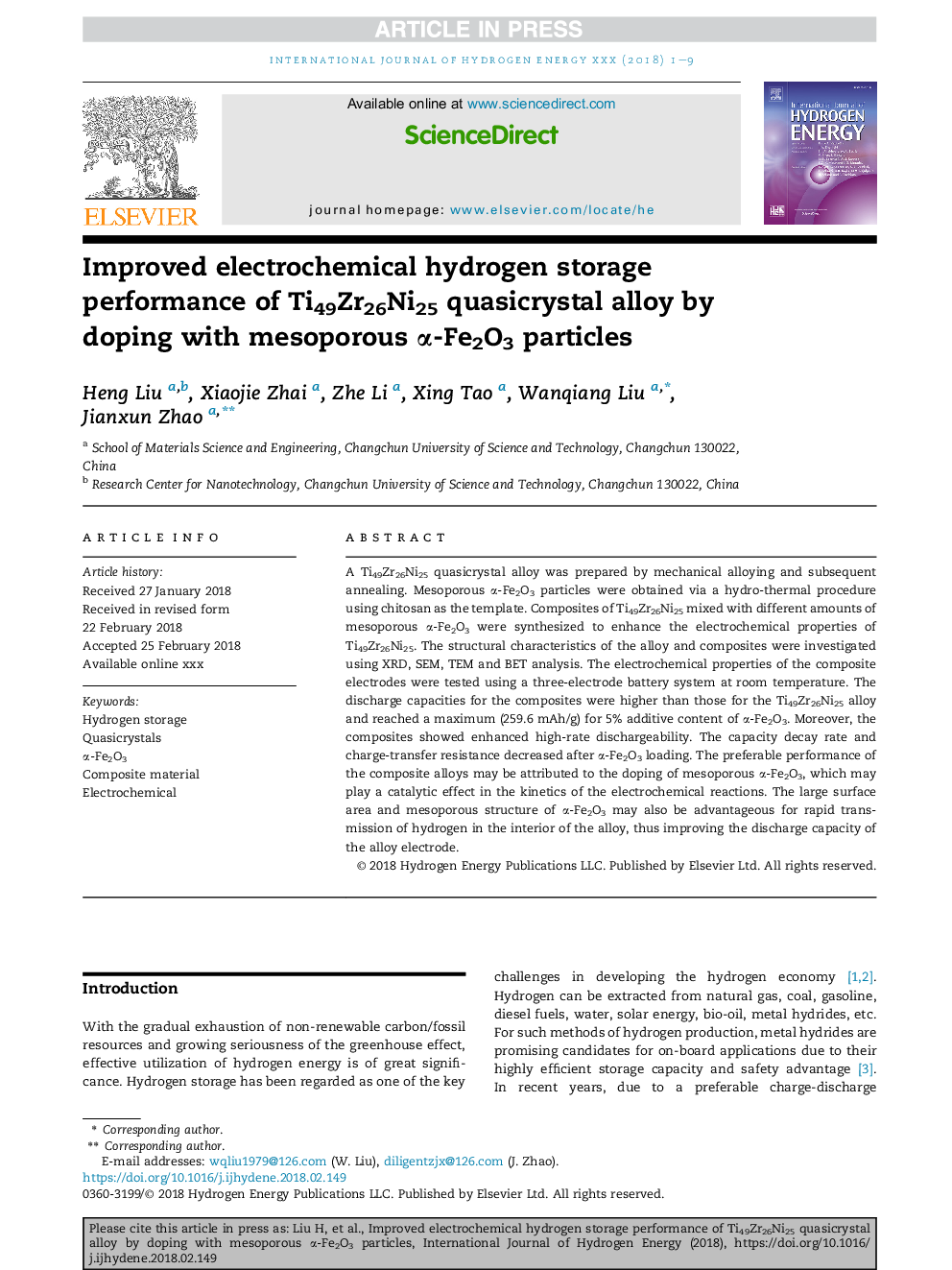| Article ID | Journal | Published Year | Pages | File Type |
|---|---|---|---|---|
| 7706583 | International Journal of Hydrogen Energy | 2018 | 9 Pages |
Abstract
A Ti49Zr26Ni25 quasicrystal alloy was prepared by mechanical alloying and subsequent annealing. Mesoporous α-Fe2O3 particles were obtained via a hydro-thermal procedure using chitosan as the template. Composites of Ti49Zr26Ni25 mixed with different amounts of mesoporous α-Fe2O3 were synthesized to enhance the electrochemical properties of Ti49Zr26Ni25. The structural characteristics of the alloy and composites were investigated using XRD, SEM, TEM and BET analysis. The electrochemical properties of the composite electrodes were tested using a three-electrode battery system at room temperature. The discharge capacities for the composites were higher than those for the Ti49Zr26Ni25 alloy and reached a maximum (259.6 mAh/g) for 5% additive content of α-Fe2O3. Moreover, the composites showed enhanced high-rate dischargeability. The capacity decay rate and charge-transfer resistance decreased after α-Fe2O3 loading. The preferable performance of the composite alloys may be attributed to the doping of mesoporous α-Fe2O3, which may play a catalytic effect in the kinetics of the electrochemical reactions. The large surface area and mesoporous structure of α-Fe2O3 may also be advantageous for rapid transmission of hydrogen in the interior of the alloy, thus improving the discharge capacity of the alloy electrode.
Related Topics
Physical Sciences and Engineering
Chemistry
Electrochemistry
Authors
Heng Liu, Xiaojie Zhai, Zhe Li, Xing Tao, Wanqiang Liu, Jianxun Zhao,
